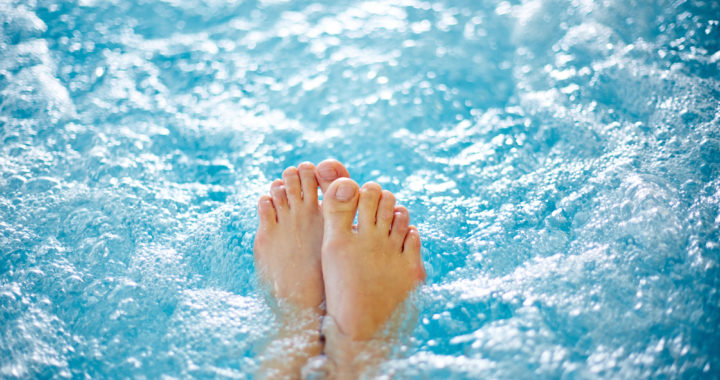Diabetes is no ‘walk in the park’ when it comes to your feet. Diabetes can reduce blood flow to your feet which in turn deprives your feet of oxygen and nutrients. This makes the healing process for blisters, sores and cuts much more difficult. Diabetic nerve damage, also referred to as Peripheral Neuropathy, can also cause numbness in your feet, making you more susceptible to untreated problems because you won’t be able to feel the sores and/or blisters . If these sores are left untreated, they can become deeply infected and lead to amputation. Peripheral Neuropathy can also cause sharp pain in your feet. Making you extremely sensitive to the lightest touch (such as your bed sheets.) Thankfully, it takes just one small step in the right direction to prevent foot problems associated with Diabetes. Here are some routine steps you can take that will help you combat diabetic nerve pain.
- Check both feet daily. Look at each foot carefully, every single day. This means in between your toes, the ball of your foot, your heel- all of it. Blisters and infections tend to start between the toes, and you won’t always feel them until they become infected or irritated if you have Diabetic nerve pain.
- Wash with warm – not hot – water. Each day, wash your feet briefly with warm water. You may not be able to feel the heat with your feet, so test the water with your hands first. Avoid soaking too long in water, since waterlogged sores have a harder time healing. Always remember to thoroughly dry your feet right away, and to be gentle between your toes!
- Wear Properly Fitted Shoes. In the long haul, finding shoes that properly fit your feet pay off. The slightest rubbing or ill-fitting shoe can cause blisters that will turn into sores that become infected and difficult to heal. Trying out different socks can even make a world of difference for your feet. If you see even the most minor signs of redness or irritation, this means you should change your shoes/socks (since you may not feel if the pain is getting worse.) Before buying those new kicks, check for rough seams or sharp edges that could hurt your feet. It is also good so break your shoes in gradually so that you are not damaging your feet any further due to diabetic nerve pain.
- Barefoot isn’t for you. It is a good rule of thumb to always have something on your feet. Whether it be shoes, slippers or even socks. Speaking of socks, always wear them with shoes. Since leather, plastics and man-made show materials can irritate your skin and bring forth blisters. While nylons, knee-highs or thin socks are pretty to look at, they may not always offer the support you need. Wear thicker socks to pad your feet and cushion any calluses or sore spots.
- Speak Up! Nerve damage on your feet can be unpredictable. Let your doctor know right away if anything changes in the sensation of your feet, toes or legs. Such sensations include pain, tingling, pins-and-needles, numbness or anything out of the ordinary. Theres nothing small or unimportant when it comes to a potential foot amputation.
- Soft and Dry. The skin of your foot can become cracked and dry because of high glucose levels. This makes it much easier for bacteria to get under the skin. Which makes infections harder to heal. Every day, use a small dose of skin lotion but make sure that your feet feel dry and not damp or sticky after application. Try not to get lotion between the toes. To avoid ingrown toenails, keep you toenails trimmed and filed smooth. Sometimes it can be easier to trim your nails after lotion has been applied. After showering or bathing, use a pumice stone to gently file corns and calluses.
- Non-Impact Exercise. Exercising should be done with minimal damage to your feet. Some fun popular ways include swimming, cycling, yoga, and tai chi. It is a good idea to speak to your doctor before starting exercise.
- Fix Toe Problems. If you have bunions, corns or calluses, it is good to get these fixed. These make having properly fitted shoes hard to fit comfortably. A podiatrist can help you with these problems.
- Fitted Orthotics. A podiatrist can fit you with shoe inserts called orthotics. These support your feet if you have diabetic nerve pain or the muscles in your feet have become weak from damage. If pain or weakness is so severe where it is impossible to walk, you may need a foot brace or full on orthopedic shoes. A podiatrist is the best person to help with these.
- Blood Sugar.The number one way to control nerve pain prevention is to manage your diabetes. The most important determinents of whether or not you get diabetic neuropathy is how long you have had diabetes and how well you control your blood sugar.
Thank you to WebMD for the original information. You can read more here.

